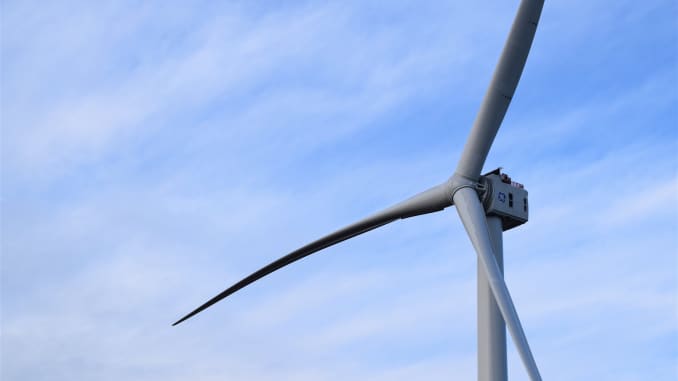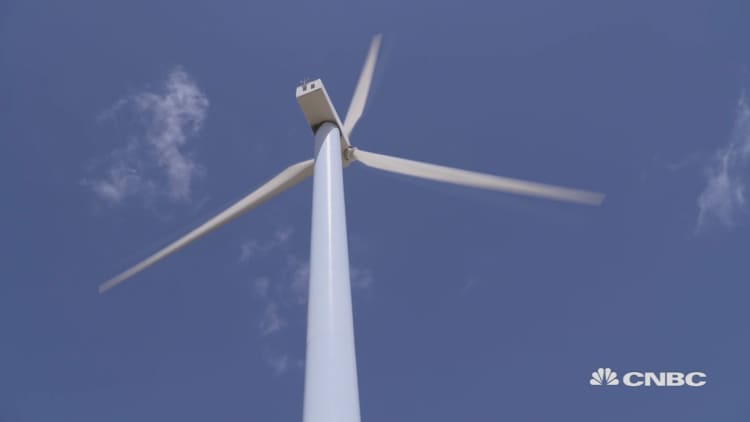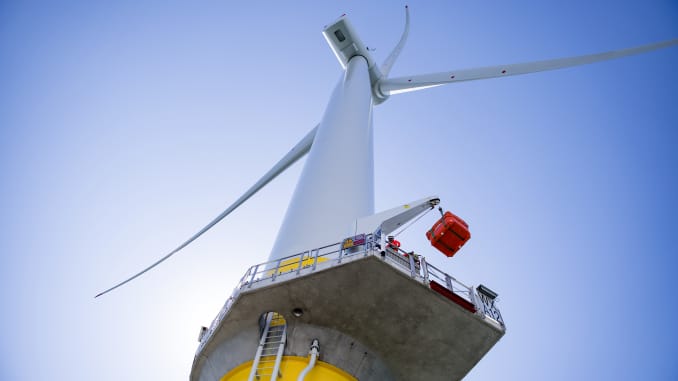As big endowments spurn fossil fuel stocks, there’s one thing making this decision easy
PUBLISHED MON, FEB 10 Pippa Stevens@PIPPASTEVENS13KEY POINTS
Large investment funds are facing mounting pressure from activists to divest from the fossil fuel industry, and as energy stocks underperform the decision is becoming easier.
Large investment funds are facing mounting pressure from activists to divest from the fossil fuel industry, and as energy stocks underperform the decision is becoming easier.
Earlier in February Harvard’s Faculty of Arts and Sciences voted in favor of divestment, and Georgetown University said it would cease new all new fossil fuel-related investments.
“I’m done with fossil fuels ... they’re just done. We’re starting to see divestment all over the world,” Jim Cramer said Jan. 31 on CNBC’s “Squawk Box.” “You’re seeing divestiture by a lot of different funds ... we’re in the death knell phase.”
As big endowment funds face mounting pressure to reduce their exposure to the fossil fuel industry, there’s one thing making their decision easier: the energy sector’s underperformance.
In the last ten years, the S&P energy sector gained just 1% as low oil prices, high operational costs and shifting consumer sentiment set off a wave of selling. In the same time period, the broader market gained 212%.
Energy’s lackluster performance coincides with college students across the United States protesting university endowments’ role in owning and supporting fossil fuel companies. Now, from the perspective of fund managers, divestment could make sense on both financial as well as moral grounds.
“I’m done with fossil fuels ... they’re just done. We’re starting to see divestment all over the world,” Jim Cramer said Jan. 31 on “Squawk Box.” “You’re seeing divestiture by a lot of different funds ... we’re in the death knell phase,” he added.

Harvard and Yale students protest during the halftime of the college football game between Harvard and Yale at the Yale Bowl in New Haven, CT on Saturday, Nov. 23, 2019. Demonstrators stormed the field during halftime at the Harvard-Yale football game Saturday, delaying the game for about an hour to demand that both universities divest their investments in fossil fuels and to call attention to the issue of climate change.
Nic Antaya | The Boston Globe | Getty Images
In the course of the last week, two Universities have made key announcements.
On Feb 5. the Harvard Faculty of Arts and Sciences voted in favor of the endowment divesting from the fossil fuel industry in a 179-20 vote, according to the Harvard Crimson. The vote does not ensure implementation. — Harvard President Lawrence Bacow will bring the results before the endowment committee — although the Faculty of Arts and Sciences is the University’s largest division.
The vote in and of itself is important since Harvard’s endowment is the largest in the world, and is looked at as an example for ways in which other universities can build their own funds. As of June 2019, it stood at $40.9 billion.
One day later, on Feb. 6, Georgetown University announced that it would make no new investments in companies whose business is fossil fuel-dependent, and said over the coming years it would work to shed its exposure to fossil-fuel related companies in both the public and private market.
The actions from Harvard and Georgetown follow the University of California, which in September said it was going fossil fuel free. In an op-ed for The Los Angeles Times the endowment’s chief investment officer Jagdeep Singh Bachher and the UC Board of Regents’ Investments Committee chairman Richard Sherman said the decision was “not exactly for the reasons you may think.”
“Our job is to make money for the University of California, and we’re betting we can do that without fossil fuels investments,” they wrote on Sept. 17. “We believe hanging on to fossil fuel assets is a financial risk ... While our rationale may not be the moral imperative that many activists embrace, our investment decision-making process leads us to the same result.”
“The reason we sold some $150 million in fossil fuel assets from our endowment was the reason we sell other assets: They posed a long-term risk to generating strong returns for UC’s diversified portfolios,” they added.
Of course, university endowments are complex and composed of many different types of financial instruments, including stocks, bonds, venture capital and private equity investments. So it may be easier said than done to completely divest from the space.
Some argue that since the world will continue to depend on fossil fuels for the foreseeable future, the so-called best actors in the space should be rewarded.
“The focus on divestment is a bit too blunt of an instrument,” Valerie Grant, senior vice president at AllianceBernstein, said in November on CNBC’s “Power Lunch.”
Rather than following a negative screen process — which means completely ignoring one area of the market — she said students should engage with the endowment’s investment team to identify long-term risks posed by the climate crisis, and to push for positive changes through shareholder votes, among other things.
“There really has been an evolution in responsible investing ... Traditionally it was all about what not to buy or what not to own. And really I think what most investors are focused on now is what to own,” she added.












